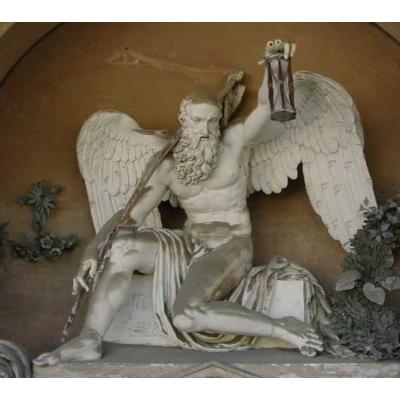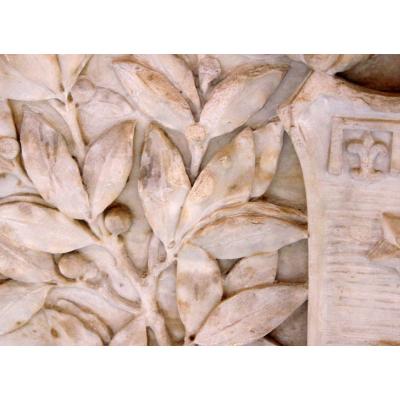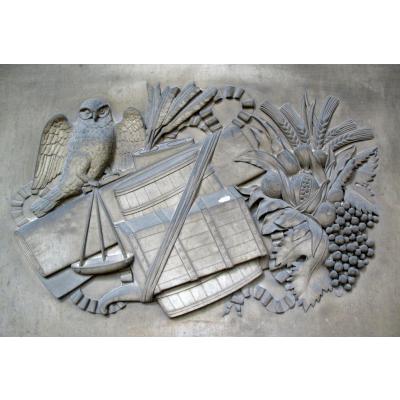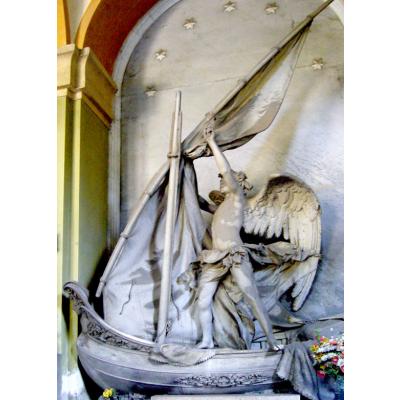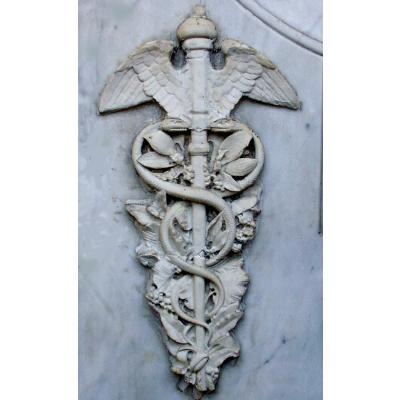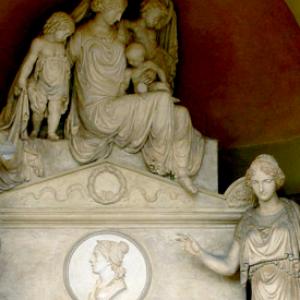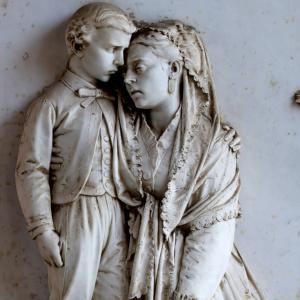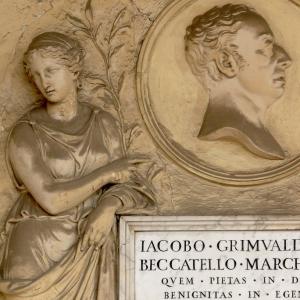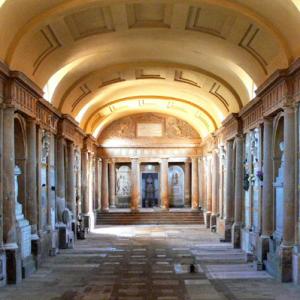Schede
The symbols described in this dictionary represent, from a certain point of view, a particular decline in the relationship between the culture of 19th century classic antiquity and the Judeo-Christian tradition that is crystallized on a particular support: the tomb.
This final resting place does not only reflect the private and family memorials, in which lie "the rest of humanity" conserving their memory, but the resting place is significantly condensed, a container thanks to which the dead can continue to have a social life through their rememberance. The tomb is a place of double meaning. It is a passage between the world of the land and of the other world, a beyond more or less organised, dominated from nothing, from divine light, where eternal life and eternal damnation reign, populated by spirits, by angels, by loved ones, etc. But the tomb is also a doorway between the past and present absorbing culture and "discourse" not only of individuals, but also of close communities, such as the family or professional organisations, including up to all of society, and their memories are often entrusted to the funeral monuments as means to continue their discourse if the honor system and organisational structure continues in the same way. The cemetery, particularily during the 19th century, was lined by dense vegetation marking the various epigraphs and morphologies recounting and giving voice to the dead. Though the monuments, which are guaranteed to outlive the identity of the individual and of whole families, are created "for himself and his loved ones" they exist as more of a condition of a-mortality rather than of immortality. For decades these tombs have been extremely talkative, rich in signs and in images, they have recounted their fortunes, their civil virtue, their passed loved ones and the ache and the experiences of those who remain. This chattiness could have been amazing, breaking through our contemporary custom of muting tombs, where the dead cannot speak, the images disappear into a single photograph and their words fall from time. The cemetery, as said by anthropologist Jean-Didier Urbain, is a type of enormous library, where it is possible to consult the biographies of the best people, their genealogies, to look for information about the economic, political and cultural history of a city and a nation, and to browse volumes of encyclopaedias on the histories of art and tradition. The oldest volumes of this metaphorical library were produced, in large part, by the 19th century middle class, who were full of rich information, and those who have died more recently, in a society that has tabooed natural death, are reduced to a name on a certificate.
In many of these 19th century cities of death, the evidence of society’s relationship with art, classic culture and the “oriental” is seen. This relationship is not always direct, it is mediated from the preceeding ancient literature from the renaissance and neoclassism. There are thousands of Greek-Roman, Etruscan and ancient Egyptian examples of statues, reliefs, architecture styles, paintings, symbols, forms, iconographies and epigraphies found that are juxtaposed and mixed with a variety of works derived from the Judeo-Christian tradition. Judeo-Christian motifs seemed to have been in the minority in the many decades that followed the construction of the first Italian (moenia) cemetery, as they were excluded from the church, from the blessings and from the alpha-omega, so much so that the juxtaposed symbols were used more often in funeral "marches" than religious symbolism. For over a century, the tombs were decorated by a kleidescope of images such as: capsized torches, pyramids, butterflies, flowers, poppy flowers, lizards, semi-opened doors, spheres, owls, staffs, etc. In the 19th century, the main "knowledge of the past", was insistent with the "focus on antiquity" described by Salvatore Settis, that due to archaeological discoveries, new antiquitarian focus, and the creation of academic fields and publications on ancient art collections, the mobility of ideas and forms were not completely forgotten. These seemingly out-of-place elements act as mechanisms of persistance and latency, outlasting the obvious characteristics of each fruitful relationship as the past is continually reinterpreted to best match the present’s function. These apparatuses, whether being photographed in a determined moment, or seen in their evolution, do not compose an organic system, ordinary and monolithic, but a complex semiotic system that reveal diverse stratifications, some recent and othes of a much more ancient origin.
Click here to the alphabetical disctionary of funerary symbols.
Translation from italian language by Holly Bean.

